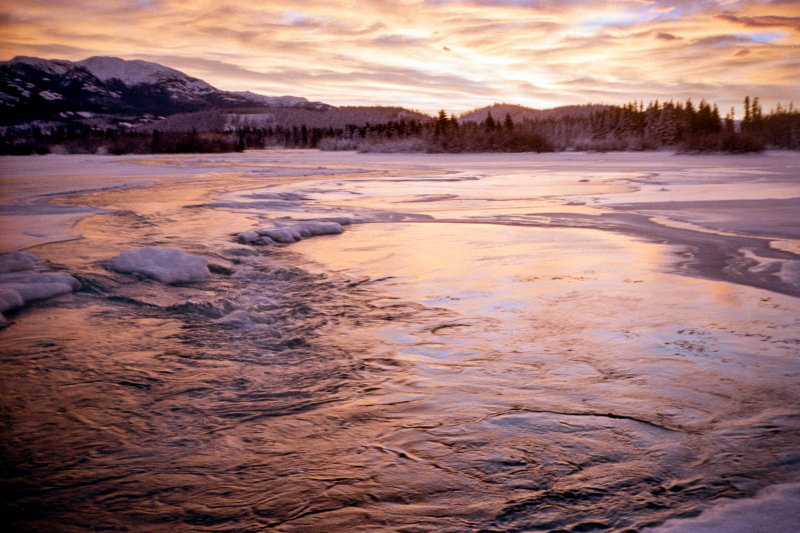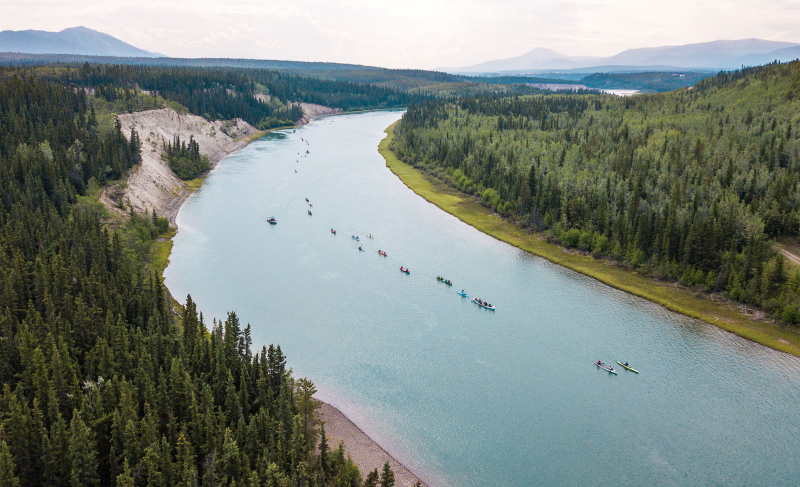Yukon River
The Yukon River is the third-longest river in the United States, with a length of 3,190 kilometers. This river originates in British Columbia, Canada, and flows westward through the Yukon Territories, which bear the same name. It then flows across the entire state of Alaska, allowing it to be recognized as a United States river. The Yukon River runs all the way from Canada to Alaska's western coast, where it empties into the Bering Sea.
Native Americans and early Europeans exploited the Yukon as a mode of transportation throughout northern North America, and it was important not just for hunting and travel, but also for the Klondike or Yukon Gold Rush. The Teslin, Big Salmon, Pelly, Stewart, Klondike, Porcupine, and Koyukuk are the primary east- and north-bank tributaries, while the Takhini, White, and Tanana are the main west- and south-bank tributaries. Its rivers drain an area of around 328,000 square miles (850,000 square kilometers) from a semicircle of high mountains surrounding it. Until the mid-nineteenth century, when individuals of European descent began to move into the region, first as fur traders and subsequently in search of mineral wealth, this vast area—larger than Turkey—was populated primarily by North American Indians.
Length: 3,190 Km












